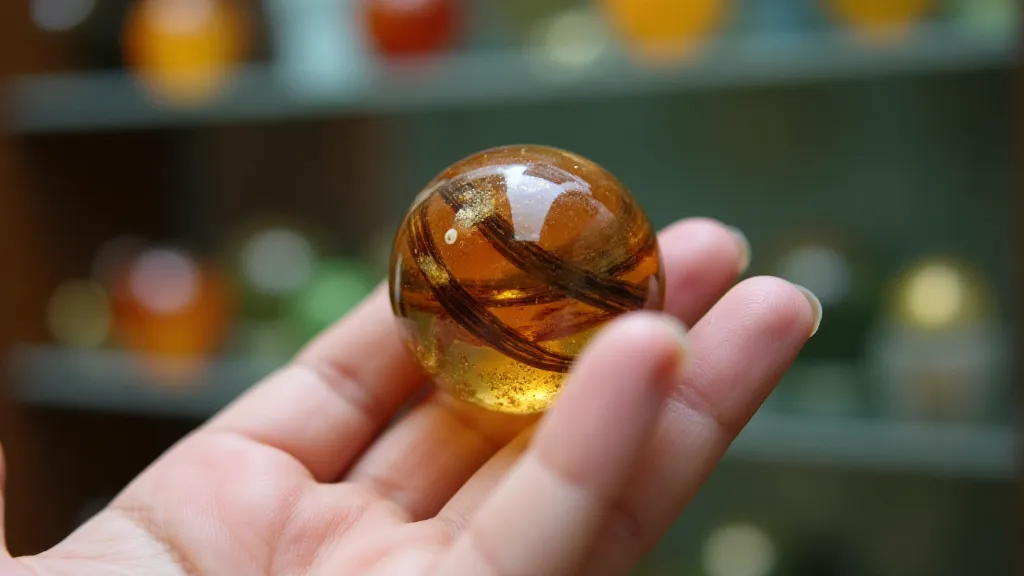Silent Witnesses: How Marbles Reveal the Social Fabric of a Bygone Era
There's a quiet magic held within a handful of antique marbles. They’re more than just beautiful glass spheres; they're silent witnesses to a history far richer than many realize. Each swirl, each color variation, each tiny imperfection tells a story – a story of childhood joy, of industrial innovation, and, crucially, of the societal shifts that shaped the world they rolled through. To a marble collector, they are not simply objects of beauty; they are tangible links to a vanished age. And understanding that connection is key to truly appreciating these remarkable treasures.

The Rise of Mass Production and the Marble Craze
Before the mid-19th century, marbles were largely handcrafted, primarily from clay – a readily available and inexpensive material. These clay marbles, often crudely formed and fired, were the playground staples of children across social classes. They represent a time when labor was intensely personal, when the creation of everyday objects was a cottage industry. But the Industrial Revolution dramatically altered that landscape. The invention of automated glass-making machines, like the bottle blowing machine, suddenly made mass-produced glass marbles a reality. This accessibility was pivotal.
Suddenly, marbles weren’t just for the children of farmers and laborers; they became a universally enjoyed pastime. The burgeoning middle class, fueled by increased prosperity, embraced this new form of childhood entertainment. This surge in demand led to the establishment of specialized marble factories, particularly in the Northeastern United States, with names like Vitreous Glass and Akron Marble Works becoming household names among young collectors. The sheer volume of marbles produced during this golden age (roughly 1850-1930) is staggering.
Clay Marbles: Echoes of Simplicity and Rural Life
While the glass marble era captured the imagination, the legacy of clay marbles remains significant. Their very existence speaks volumes about a society more closely tied to the land. These aren’t the dazzling, intricate beauties of their glass counterparts. They are often simple, roundish shapes, sometimes bearing the marks of the potter’s hand. Sometimes, families would even make their own clay marbles, a simple task that provided entertainment and a connection to the earth. Holding a clay marble, you can almost feel the warmth of the kiln and the connection to a slower, more deliberate pace of life. The significance of these humble playthings extends beyond mere recreation; they’re potent symbols of a time before mass production reshaped childhood. For those captivated by the stories held within these earthy spheres, delving into Vestiges of Innocence: Unearthing the Stories Held Within Clay Marbles provides a deeper exploration of their historical context and cultural impact.
I remember my grandfather, a retired farmer, showing me a small bag of clay marbles he’s kept since he was a boy. Each one was different, chipped and worn smooth from years of play. He spoke of sharing them with his siblings, of games played in dusty fields, of a childhood defined by hard work and simple pleasures. Those marbles weren't about rarity or value; they were about shared memories and a tangible link to his past.
The Varieties Speak to Economic Conditions
The types of glass marbles produced offer even more nuanced insights. "Common" swirls – patterns created by mixing molten glass of different colors – were commonplace and affordable, enjoyed by children of all backgrounds. “Patch” marbles, with distinct areas of different colored glass, indicate varying levels of glass mixing skill. "Fantasia" marbles, a dazzling array of colors and swirls, reflect advancements in glass technology and the pursuit of visual appeal. Their creation required greater skill and, consequently, commanded a higher price, often making them the coveted possession of a fortunate few.
The rise and fall of certain marble types are also directly tied to economic forces. The Great Depression brought a sharp decline in production, as factories struggled and disposable income evaporated. The advent of plastic marbles in the mid-20th century further diminished the demand for glass, marking the end of an era for many marble manufacturers. Determining the age and origins of antique marbles often requires meticulous examination of manufacturing techniques. For a detailed guide on The Imprint of Time: Dating Antique Marbles Through Manufacturing Styles, collectors can learn how to analyze these subtle clues to unravel the history embedded within each sphere.

The Craftsmanship: A Legacy of Skill and Artistry
Beyond the simple act of manufacturing, the craftsmanship involved in creating antique marbles is often overlooked. The skilled artisans who worked in marble factories took pride in their work. Even "common" marbles exhibit a certain level of artistry. The uniformity, the even distribution of color, the smoothness of the surface – all speak to a level of expertise honed over years of practice.
More elaborate marbles – "suzies" (hand-painted marbles), “agate” (layered) marbles, and "commies" (clear glass marbles with opaque swirls) – showcase an even higher level of skill. These weren’t mass-produced; they were often created by specialized artisans, each marble a unique work of art. Restoring a damaged antique marble – carefully cleaning away grime, repairing cracks – requires a deep understanding of glass and a reverence for the original craftsmanship. It’s a labor of love, a way to preserve a piece of history.
Collecting Beyond Value: A Connection to the Past
Of course, the value of antique marbles is a factor for many collectors. Rare varieties, like "black jacks" (black glass marbles) or marbles from defunct factories, can fetch significant sums. But for the true marble enthusiast, the value extends far beyond monetary worth. It's about the story each marble tells, the connection to a bygone era.
It's about understanding the social and economic forces that shaped these small spheres of glass, about appreciating the craftsmanship of the artisans who created them, and about recognizing the enduring power of childhood joy. Each marble is a tiny, tangible piece of history, a silent witness to the ever-changing social fabric of our world. And in collecting them, we’re not just acquiring objects; we’re preserving memories, honoring traditions, and keeping the echoes of the past alive. The emotional significance assigned to marbles isn’t solely determined by their scarcity; it’s intricately linked to personal memories and the broader cultural context. Exploring the The Weight of Memory: How Rarity Influences the Emotional Value of Marbles provides a fascinating look into the psychological factors that shape our perception of these treasured objects.

The dedication required to curate and maintain a collection of antique marbles—cleaning, cataloging, and preserving delicate objects—raises questions about the balance between passion and preservation. Those grappling with these considerations might find inspiration and guidance in The Collector's Paradox: Balancing Passion and Preservation, which examines the challenges and rewards of safeguarding these fragile links to the past.
The allure of antique marbles extends beyond mere aesthetics; it’s a journey into a world of history, craftsmanship, and childhood wonder. These small spheres hold within them stories waiting to be discovered, connecting us to generations past and offering a glimpse into the enduring power of simple joys.





